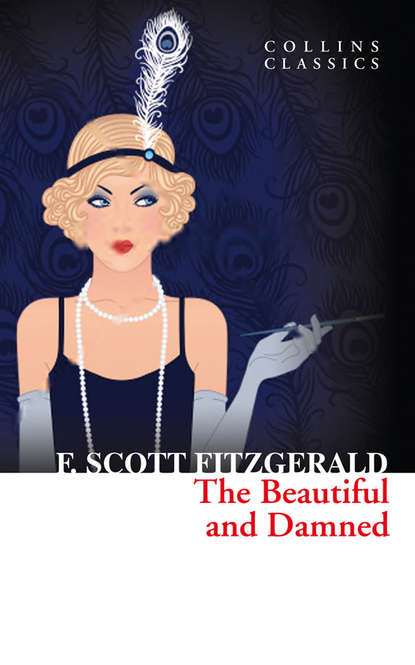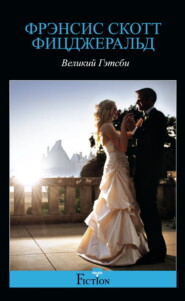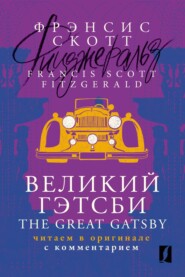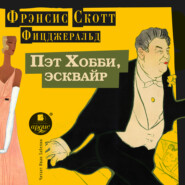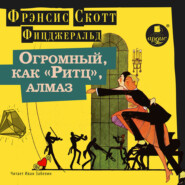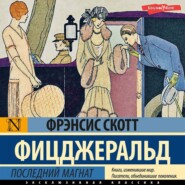По всем вопросам обращайтесь на: info@litportal.ru
(©) 2003-2024.
✖
The Beautiful and Damned
Год написания книги
2019
Настройки чтения
Размер шрифта
Высота строк
Поля
The Beautiful and Damned
Francis Scott Key Fitzgerald
From Collins Classics and the author of ‘The Great Gatsby’ comes this razor-sharp satire on the excesses of the Jazz AgeFrom the author of The Great Gatsby, a tale of marriage and disappointment in the Roaring Twenties.Fitzgerald’s rich and detailed novel of the decadent Jazz Era follows the beautiful and vibrant Anthony Patch and his wife Gloria as they navigate the heady lifestyle of the young and wealthy in 1920s New York. Patch is the presumptive heir to his grandfather’s fortune, and keeps his equally spoiled wife in comfort while biding time until his grandfather’s death. Patch is unable to hold down any kind of job and spends his days in luxury, indulging in whatever pleasures are available. But as the money begins to fail, so does their marriage. Patch’s gradual descent into alcoholism, depression and alienation from his marriage ultimately lead to his ruin. Fitzgerald’s novel is a remorseless exploration of the horrors of an age of excess and lost innocence.F. Scott Fitzgerald is regarded as one of the greatest American writers of the 20th century. Despite his present popularity, Fitzgerald was often in financial trouble, due to the fact that only one of his novels sold well enough to support the extravagant lifestyle that he and his wife Zelda adopted, and later Zelda’s medical bills. His novel The Great Gatsby has sold millions of copies and remains a continual best-seller.
THE BEAUTIFUL AND DAMNED
F. Scott Fitzgerald
CONTENTS
Title Page (#u54a73d48-bc89-5876-a10e-af7f3bfa48cc)
History of Collins (#u875d0292-a5d8-52f0-8f6b-c8178d20087e)
Life & Times (#uec50af48-e263-5c25-85cf-12a63f7a31ed)
Epigraph (#u4ebdc677-8b9f-5255-aeb3-b01ada7c0221)
Dedication (#u29ab7dfe-24c9-5994-ac66-c3be7e1a10ee)
Book One (#u0c15b657-bc42-5648-aa2e-e90b27eba9dc)
Chapter 1 Anthony Patch (#ucb0d437b-19cd-55ce-b7c1-679ae280efef)
Chapter 2 Portrait of a Siren (#u2f9cef80-4615-509a-99db-a468120b1ecd)
Chapter 3 The Connoisseur of Kisses (#u79b9c415-a705-5706-b216-1ed4e8e3e466)
Book Two (#litres_trial_promo)
Chapter 1 The Radiant Hour (#litres_trial_promo)
Chapter 2 Symposium (#litres_trial_promo)
Chapter 3 The Broken Lute (#litres_trial_promo)
Book Three (#litres_trial_promo)
Chapter 1 A Matter of Civilization (#litres_trial_promo)
Chapter 2 A Matter of Aesthetics (#litres_trial_promo)
Chapter 3 No Matter! (#litres_trial_promo)
Classic Literature: Words and Phrases adapted from the Collins English Dictionary (#litres_trial_promo)
Copyright (#litres_trial_promo)
About the Publisher (#litres_trial_promo)
History of Collins (#ulink_8d42a263-0464-5f73-a7e3-cded46bbffb3)
In 1819, millworker William Collins from Glasgow, Scotland, set up a company for printing and publishing pamphlets, sermons, hymn books and prayer books. That company was Collins and was to mark the birth of HarperCollins Publishers as we know it today. The long tradition of Collins dictionary publishing can be traced back to the first dictionary William published in 1824, Greek and English Lexicon. Indeed, from 1840 onwards, he began to produce illustrated dictionaries and even obtained a licence to print and publish the Bible.
Soon after, William published the first Collins novel, Ready Reckoner, however it was the time of the Long Depression, where harvests were poor, prices were high, potato crops had failed and violence was erupting in Europe. As a result, many factories across the country were forced to close down and William chose to retire in 1846, partly due to the hardships he was facing.
Aged 30, William’s son, William II took over the business. A keen humanitarian with a warm heart and a generous spirit, William II was truly ‘Victorian’ in his outlook. He introduced new, up-to-date steam presses and published affordable editions of Shakespeare’s works and ThePilgrim’s Progress, making them available to the masses for the first time. A new demand for educational books meant that success came with the publication of travel books, scientific books, encyclopaedias and dictionaries. This demand to be educated led to the later publication of atlases and Collins also held the monopoly on scripture writing at the time.
In the 1860s Collins began to expand and diversify and the idea of ‘books for the millions’ was developed. Affordable editions of classical literature were published and in 1903 Collins introduced 10 titles in their Collins Handy Illustrated Pocket Novels. These proved so popular that a few years later this had increased to an output of 50 volumes, selling nearly half a million in their year of publication. In the same year, The Everyman’s Library was also instituted, with the idea of publishing an affordable library of the most important classical works, biographies, religious and philosophical treatments, plays, poems, travel and adventure. This series eclipsed all competition at the time and the introduction of paperback books in the 1950s helped to open that market and marked a high point in the industry.
HarperCollins is and has always been a champion of the classics and the current Collins Classics series follows in this tradition – publishing classical literature that is affordable and available to all. Beautifully packaged, highly collectible and intended to be reread and enjoyed at every opportunity.
Life & Times (#ulink_d96b89dd-eba8-5148-a8de-1bdf3244e5c9)
Fitzgerald’s books provide a curious window into a world that has been and gone. A world where elements of US society had drowned themselves in a moral and ethical sump. His novels are a warning about what can happen when people become decadent and dishonourable, and appeal because the reader enjoys voyeuristically peering in to view the lives of those who are ridiculed as being exotic, foolish and beguiled, and is grateful not to be a part of it.
There is a moral judgement involved in the process of reading such stories and Fitzgerald’s work can be compared to that of the British author Thomas Hardy, who takes the same view that people tend to get what they deserve in life and that the real victims are those who get caught up, either by accident or by attraction. There is a definite register of contempt penned by both of these authors, as if to suggest that they have chosen to point the spotlight at those for whom they have little time in real life.
As its title suggests, The Beautiful and Damned (1922) is about the superficiality of café society in New York during the Jazz Age. This was the period when jazz music became hugely popular, when the smart set enjoyed living to excess in the heady days before the Great Depression. Fitzgerald observed that these people were often attractive and glamorous in appearance, but flawed and shallow in personality. He isn’t simply writing a condemnation of fey types, however, as the novel is essentially autobiographical, about himself and his wife Zelda.
In fact, Fitzgerald is clever enough to illustrate that this apparent superficiality is underscored by profound character complexity. The overt superficiality veils a covert diversity of hang-ups, anxieties, desires, needs, neuroses, passions, emotions, ambitions and failings. In short, the novel is a dissection of human nature, which is fundamentally the same in any social group, no matter what the outward impression.
Nevertheless, Fitzgerald’s view is a rather unsympathetic one. He regards this social set as destined for personal disaster, because they are too subjectively obsessed to be objective about life. As a result, they lack the ability to save themselves from their indulgences, both internal and external. Ultimately Fitzgerald is saying that they lack the ingredients to keep themselves grounded, leaving their priorities in disarray. Their failure to reflect and maintain perspective on life means they inevitably lack the wisdom to make the right decisions and consequently they head for a fall.
It is this insight and analysis that makes Fitzgerald a great writer – he is just as interested in the human condition as he is in telling an entertaining story. The Beautiful and Damned is really a self-morality play, as the consequences it presents are self-impacting. The sub-society he describes is self-contained, like fermenting yeast in a demijohn, destined to destroy itself with the products of its own metabolism.
Later Works
There can be few novels as divisive as F. Scott Fitzgerald’s The Great Gatsby in terms of people’s opinion of its literary worth. It registered disappointing sales upon its publication in 1925 which led to Fitzgerald slipping into obscurity despite his having established a reasonable reputation with his earlier books. Following his death, in 1940, the book was included on a list of titles to be provided free to US service men and women fighting in World War Two. This meant that 150,000 copies began circulating through the armed forces until the book became familiar to overseas Americans. As a result it had inadvertently worked its way into the American psyche and won favour where otherwise it would have been forgotten.
The story itself is essentially about the moral decay that ensued in America during the 1920s. Although other countries had class divisions, the US had the equivalent of an upper class in the form of patricians or members of long-established wealthy families. These New World aristocrats lorded themselves above other people and spent much of their lives partying their way through the Jazz Age. In addition, 1920 had seen the prohibition of alcohol, with the result that organized criminals had seen a way to make good money by bootlegging, or illegally selling liquor. When both of these groups came together they formed a social order of dilettantism – people who assumed and cultivated pretensions of sophistication. The story of The Great Gatsby spirals into tragedy as the book progresses with a succession of events – manslaughter, murder and then suicide – tragedy that seems all the more horrific after the spirited and frothy excesses that have come before.
In stark contrast to The Great Gatsby came Fitzgerald’s final novel Tender is the Night (1934), which is autobiographical at its heart. At the time of writing the book Fitzgerald’s wife was being treated for schizophrenia and the author holed-up in a house near the hospital in Baltimore, Maryland. There he wrestled with the book and indulged his alcoholism, from which he had suffered for most of his adult life. The story is about a couple who become involved because he is a psychoanalyst and she his patient. She is wealthy and fragile of mind, while he is poor and strong of mind. However, the tables are eventually turned as he becomes dependent on the demon drink and his behaviour sends him on a downward spiral, while she finds someone else and divorces him for a better life.
There are evidently themes in the book that run a close parallel with the real lives of the Fitzgeralds, so it seems that the author used the work as a way of unloading his darkest thoughts. It wasn’t so much a catharsis as a confessional, for Fitzgerald was laying his human flaws and desires bare for all to see, admitting that he had a drink problem and that his wife was his crutch. He was also known to have financial problems due to his frivolities and extravagancies and had turned to other women to satisfy his emotional and carnal desires. Much of his relationship with his wife had been spent as an amateur psychoanalyst, helping her to deal with her diminishing sanity.
Just six years after Tender is the Night was published, Fitzgerald was dead. His self-abuse had caught up with him at the age of only 44 years old, with a massive cardiac arrest. It seems that his last book was also a prophecy of his impending demise from alcohol. It was only a matter of time before his mortal being abandoned his immortal ambition. Fitzgerald the legendary writer has now outlived Fitzgerald the man several times over.
Fitzgerald and Hemingway
Fitzgerald was friends with arguably the greatest American writer, Ernest Hemingway. Hemingway encouraged Fitzgerald to pursue his prose with artistic integrity, but grew frustrated with Fitzgerald’s tendency towards making his literature commercial. However, most of Fitzgerald’s novels did not perform that well, so a large part of his income came from magazine work, writing short stories which, by their very nature, had to conform to editorial requirements. Nine years after The Great Gatsby, he had struggled to complete his final novel, Tender is the Night. Unfortunately for Fitzgerald the book was received with disappointment and the decline of his writing career continued unabated. In the latter half of the 1930s he found work developing movie scripts and carried out further commercial writing. By the time of his death his literary career had died, too.
In hindsight Fitzgerald’s work is regarded variously, but The Great Gatsby has become the quintessential American classic. Some feel that Fitzgerald’s talent would have been better focused on his novel writing, but fiscal matters always dictated that he continue with his commercial work. However, Hemingway may have been a heavyweight writer but he was certainly not a contented man. For him the praise he garnered for each new book was a fix. When he ran out of ideas he suffered severe depression and ultimately took his own life with a shotgun. Fitzgerald battled on in a workmanlike manner even when plaudits were a distant memory.
The victor belongs to the spoils.
—ANTHONY PATCH
TO SHANE LESLIE, GEORGE JEAN NATHAN AND MAXWELL PERKINS
Francis Scott Key Fitzgerald
From Collins Classics and the author of ‘The Great Gatsby’ comes this razor-sharp satire on the excesses of the Jazz AgeFrom the author of The Great Gatsby, a tale of marriage and disappointment in the Roaring Twenties.Fitzgerald’s rich and detailed novel of the decadent Jazz Era follows the beautiful and vibrant Anthony Patch and his wife Gloria as they navigate the heady lifestyle of the young and wealthy in 1920s New York. Patch is the presumptive heir to his grandfather’s fortune, and keeps his equally spoiled wife in comfort while biding time until his grandfather’s death. Patch is unable to hold down any kind of job and spends his days in luxury, indulging in whatever pleasures are available. But as the money begins to fail, so does their marriage. Patch’s gradual descent into alcoholism, depression and alienation from his marriage ultimately lead to his ruin. Fitzgerald’s novel is a remorseless exploration of the horrors of an age of excess and lost innocence.F. Scott Fitzgerald is regarded as one of the greatest American writers of the 20th century. Despite his present popularity, Fitzgerald was often in financial trouble, due to the fact that only one of his novels sold well enough to support the extravagant lifestyle that he and his wife Zelda adopted, and later Zelda’s medical bills. His novel The Great Gatsby has sold millions of copies and remains a continual best-seller.
THE BEAUTIFUL AND DAMNED
F. Scott Fitzgerald
CONTENTS
Title Page (#u54a73d48-bc89-5876-a10e-af7f3bfa48cc)
History of Collins (#u875d0292-a5d8-52f0-8f6b-c8178d20087e)
Life & Times (#uec50af48-e263-5c25-85cf-12a63f7a31ed)
Epigraph (#u4ebdc677-8b9f-5255-aeb3-b01ada7c0221)
Dedication (#u29ab7dfe-24c9-5994-ac66-c3be7e1a10ee)
Book One (#u0c15b657-bc42-5648-aa2e-e90b27eba9dc)
Chapter 1 Anthony Patch (#ucb0d437b-19cd-55ce-b7c1-679ae280efef)
Chapter 2 Portrait of a Siren (#u2f9cef80-4615-509a-99db-a468120b1ecd)
Chapter 3 The Connoisseur of Kisses (#u79b9c415-a705-5706-b216-1ed4e8e3e466)
Book Two (#litres_trial_promo)
Chapter 1 The Radiant Hour (#litres_trial_promo)
Chapter 2 Symposium (#litres_trial_promo)
Chapter 3 The Broken Lute (#litres_trial_promo)
Book Three (#litres_trial_promo)
Chapter 1 A Matter of Civilization (#litres_trial_promo)
Chapter 2 A Matter of Aesthetics (#litres_trial_promo)
Chapter 3 No Matter! (#litres_trial_promo)
Classic Literature: Words and Phrases adapted from the Collins English Dictionary (#litres_trial_promo)
Copyright (#litres_trial_promo)
About the Publisher (#litres_trial_promo)
History of Collins (#ulink_8d42a263-0464-5f73-a7e3-cded46bbffb3)
In 1819, millworker William Collins from Glasgow, Scotland, set up a company for printing and publishing pamphlets, sermons, hymn books and prayer books. That company was Collins and was to mark the birth of HarperCollins Publishers as we know it today. The long tradition of Collins dictionary publishing can be traced back to the first dictionary William published in 1824, Greek and English Lexicon. Indeed, from 1840 onwards, he began to produce illustrated dictionaries and even obtained a licence to print and publish the Bible.
Soon after, William published the first Collins novel, Ready Reckoner, however it was the time of the Long Depression, where harvests were poor, prices were high, potato crops had failed and violence was erupting in Europe. As a result, many factories across the country were forced to close down and William chose to retire in 1846, partly due to the hardships he was facing.
Aged 30, William’s son, William II took over the business. A keen humanitarian with a warm heart and a generous spirit, William II was truly ‘Victorian’ in his outlook. He introduced new, up-to-date steam presses and published affordable editions of Shakespeare’s works and ThePilgrim’s Progress, making them available to the masses for the first time. A new demand for educational books meant that success came with the publication of travel books, scientific books, encyclopaedias and dictionaries. This demand to be educated led to the later publication of atlases and Collins also held the monopoly on scripture writing at the time.
In the 1860s Collins began to expand and diversify and the idea of ‘books for the millions’ was developed. Affordable editions of classical literature were published and in 1903 Collins introduced 10 titles in their Collins Handy Illustrated Pocket Novels. These proved so popular that a few years later this had increased to an output of 50 volumes, selling nearly half a million in their year of publication. In the same year, The Everyman’s Library was also instituted, with the idea of publishing an affordable library of the most important classical works, biographies, religious and philosophical treatments, plays, poems, travel and adventure. This series eclipsed all competition at the time and the introduction of paperback books in the 1950s helped to open that market and marked a high point in the industry.
HarperCollins is and has always been a champion of the classics and the current Collins Classics series follows in this tradition – publishing classical literature that is affordable and available to all. Beautifully packaged, highly collectible and intended to be reread and enjoyed at every opportunity.
Life & Times (#ulink_d96b89dd-eba8-5148-a8de-1bdf3244e5c9)
Fitzgerald’s books provide a curious window into a world that has been and gone. A world where elements of US society had drowned themselves in a moral and ethical sump. His novels are a warning about what can happen when people become decadent and dishonourable, and appeal because the reader enjoys voyeuristically peering in to view the lives of those who are ridiculed as being exotic, foolish and beguiled, and is grateful not to be a part of it.
There is a moral judgement involved in the process of reading such stories and Fitzgerald’s work can be compared to that of the British author Thomas Hardy, who takes the same view that people tend to get what they deserve in life and that the real victims are those who get caught up, either by accident or by attraction. There is a definite register of contempt penned by both of these authors, as if to suggest that they have chosen to point the spotlight at those for whom they have little time in real life.
As its title suggests, The Beautiful and Damned (1922) is about the superficiality of café society in New York during the Jazz Age. This was the period when jazz music became hugely popular, when the smart set enjoyed living to excess in the heady days before the Great Depression. Fitzgerald observed that these people were often attractive and glamorous in appearance, but flawed and shallow in personality. He isn’t simply writing a condemnation of fey types, however, as the novel is essentially autobiographical, about himself and his wife Zelda.
In fact, Fitzgerald is clever enough to illustrate that this apparent superficiality is underscored by profound character complexity. The overt superficiality veils a covert diversity of hang-ups, anxieties, desires, needs, neuroses, passions, emotions, ambitions and failings. In short, the novel is a dissection of human nature, which is fundamentally the same in any social group, no matter what the outward impression.
Nevertheless, Fitzgerald’s view is a rather unsympathetic one. He regards this social set as destined for personal disaster, because they are too subjectively obsessed to be objective about life. As a result, they lack the ability to save themselves from their indulgences, both internal and external. Ultimately Fitzgerald is saying that they lack the ingredients to keep themselves grounded, leaving their priorities in disarray. Their failure to reflect and maintain perspective on life means they inevitably lack the wisdom to make the right decisions and consequently they head for a fall.
It is this insight and analysis that makes Fitzgerald a great writer – he is just as interested in the human condition as he is in telling an entertaining story. The Beautiful and Damned is really a self-morality play, as the consequences it presents are self-impacting. The sub-society he describes is self-contained, like fermenting yeast in a demijohn, destined to destroy itself with the products of its own metabolism.
Later Works
There can be few novels as divisive as F. Scott Fitzgerald’s The Great Gatsby in terms of people’s opinion of its literary worth. It registered disappointing sales upon its publication in 1925 which led to Fitzgerald slipping into obscurity despite his having established a reasonable reputation with his earlier books. Following his death, in 1940, the book was included on a list of titles to be provided free to US service men and women fighting in World War Two. This meant that 150,000 copies began circulating through the armed forces until the book became familiar to overseas Americans. As a result it had inadvertently worked its way into the American psyche and won favour where otherwise it would have been forgotten.
The story itself is essentially about the moral decay that ensued in America during the 1920s. Although other countries had class divisions, the US had the equivalent of an upper class in the form of patricians or members of long-established wealthy families. These New World aristocrats lorded themselves above other people and spent much of their lives partying their way through the Jazz Age. In addition, 1920 had seen the prohibition of alcohol, with the result that organized criminals had seen a way to make good money by bootlegging, or illegally selling liquor. When both of these groups came together they formed a social order of dilettantism – people who assumed and cultivated pretensions of sophistication. The story of The Great Gatsby spirals into tragedy as the book progresses with a succession of events – manslaughter, murder and then suicide – tragedy that seems all the more horrific after the spirited and frothy excesses that have come before.
In stark contrast to The Great Gatsby came Fitzgerald’s final novel Tender is the Night (1934), which is autobiographical at its heart. At the time of writing the book Fitzgerald’s wife was being treated for schizophrenia and the author holed-up in a house near the hospital in Baltimore, Maryland. There he wrestled with the book and indulged his alcoholism, from which he had suffered for most of his adult life. The story is about a couple who become involved because he is a psychoanalyst and she his patient. She is wealthy and fragile of mind, while he is poor and strong of mind. However, the tables are eventually turned as he becomes dependent on the demon drink and his behaviour sends him on a downward spiral, while she finds someone else and divorces him for a better life.
There are evidently themes in the book that run a close parallel with the real lives of the Fitzgeralds, so it seems that the author used the work as a way of unloading his darkest thoughts. It wasn’t so much a catharsis as a confessional, for Fitzgerald was laying his human flaws and desires bare for all to see, admitting that he had a drink problem and that his wife was his crutch. He was also known to have financial problems due to his frivolities and extravagancies and had turned to other women to satisfy his emotional and carnal desires. Much of his relationship with his wife had been spent as an amateur psychoanalyst, helping her to deal with her diminishing sanity.
Just six years after Tender is the Night was published, Fitzgerald was dead. His self-abuse had caught up with him at the age of only 44 years old, with a massive cardiac arrest. It seems that his last book was also a prophecy of his impending demise from alcohol. It was only a matter of time before his mortal being abandoned his immortal ambition. Fitzgerald the legendary writer has now outlived Fitzgerald the man several times over.
Fitzgerald and Hemingway
Fitzgerald was friends with arguably the greatest American writer, Ernest Hemingway. Hemingway encouraged Fitzgerald to pursue his prose with artistic integrity, but grew frustrated with Fitzgerald’s tendency towards making his literature commercial. However, most of Fitzgerald’s novels did not perform that well, so a large part of his income came from magazine work, writing short stories which, by their very nature, had to conform to editorial requirements. Nine years after The Great Gatsby, he had struggled to complete his final novel, Tender is the Night. Unfortunately for Fitzgerald the book was received with disappointment and the decline of his writing career continued unabated. In the latter half of the 1930s he found work developing movie scripts and carried out further commercial writing. By the time of his death his literary career had died, too.
In hindsight Fitzgerald’s work is regarded variously, but The Great Gatsby has become the quintessential American classic. Some feel that Fitzgerald’s talent would have been better focused on his novel writing, but fiscal matters always dictated that he continue with his commercial work. However, Hemingway may have been a heavyweight writer but he was certainly not a contented man. For him the praise he garnered for each new book was a fix. When he ran out of ideas he suffered severe depression and ultimately took his own life with a shotgun. Fitzgerald battled on in a workmanlike manner even when plaudits were a distant memory.
The victor belongs to the spoils.
—ANTHONY PATCH
TO SHANE LESLIE, GEORGE JEAN NATHAN AND MAXWELL PERKINS





